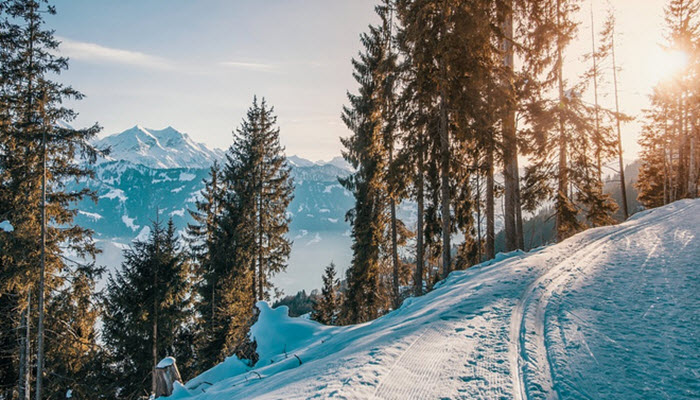What do you do in the wintertime when you want to go out to enjoy the fresh air and get some exercise? Skiing or snowboarding, sure, but this often requires quite a lot of planning, driving to the nearest ski resort and paying for the ticket and possibly for the equipment, too. What if you just want to step out and get going without all that hassle? Ice skating, sure, but the ice tracks might be scarce and packed with people. – try having a good time constantly trying to avoid bumping into other people skating in circles around the track! What if you want something more peaceful and quiet, just to enjoy your own company, the fresh air and snowy scenery? Many people swear by cross-country skiing.

What is it?
If you were born and raised in Northern Europe, cross-country skiing is probably a familiar sport from your school’s wintertime PE activities. Whereas in downhill skiing you go down a hill on your skis, in cross-country skiing you move across normal terrain using ski poles to push yourself forward. Depending on the style of skiing, the speed, the terrain and your stamina, cross-country skiing can either be a quite heavy workout or a somewhat relaxing way to enjoy the outdoors.
If you are a beginner, you might want to get a feel of the sports by using ready-made tracks on a ready-made trail, shuffling forward along the tracks with the help of your poles. The more experienced will advance in open terrain and in a style which resembles ice skating, but with broader movements. Fields, forests and golf courses are the kinds of terrain you are looking for (good luck trying to cross-country in a city).
Brief History
Originally, cross-country skiing had little to do with enjoying the crispy weather and getting some exercise to balance out all that sitting at a computer. Instead, it was just a handy way to travel in snow. Appropriately, the cross-country skiing we know now originated in Scandinavia, thousands of years ago, and only through time did the many different forms of recreational skiing start to emerge: alpine skiing, ski-jumping, slalom, etc.
The Gear
For cross-country skiing, you will need the following equipment:
Skis – quite a lot narrower and longer than you might be used to in downhill skiing.
Ski poles – which are essential, unlike in downhill skiing.
Cross-country boots – resembling sneakers more than astronaut gear.
Comfortable, warm clothing – if there is enough snow for skiing, the chances are that the temperature is such that you really won’t want to forget your beanie, gloves or muffler.
Who is it for?
Anyone! The beauty of cross-country skiing is that it is a perfectly suitable form of sport for anyone who lives in, or is travelling to, a region where there is enough winter snow for such activity. When you’ve got the idea of it, and know how to move forward most efficiently, it might even get quite addictive.